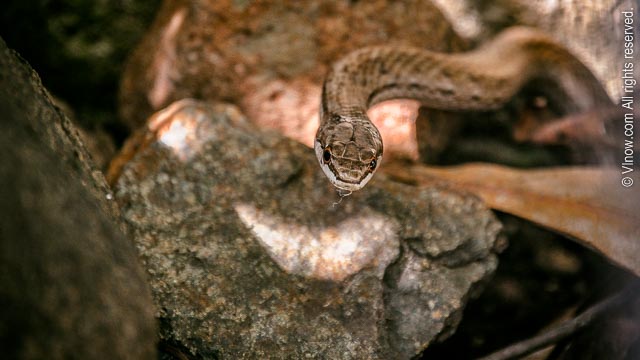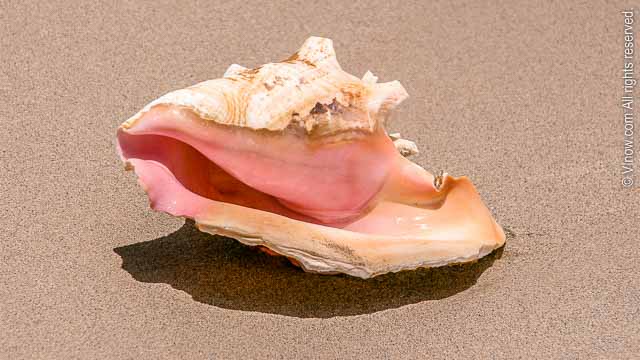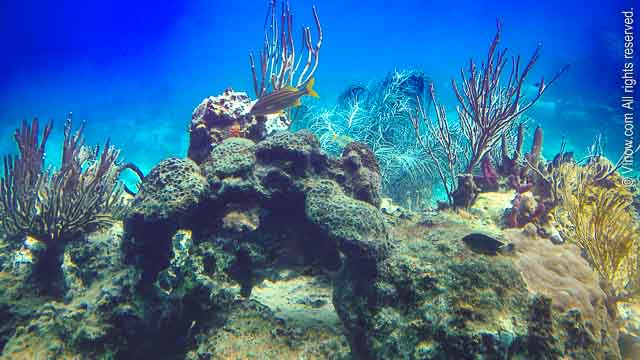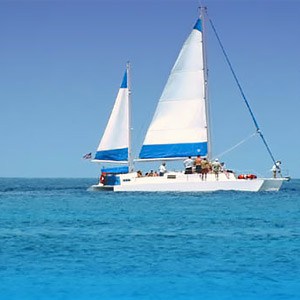Over the years we have received an assortment of questions, usually about beaches, things to do and where to stay. One of the popular questions that is outside the trip planning box is whether there are any creepy crawly things. So for today’s blog we caught up with Dr. Renata Platenberg, Reptile Ecologist and an Assistant Professor of Natural Resource Management at the University of the Virgin Islands, to inquire about snakes and spiders in the U.S. Virgin Islands.
Question: Do we have snakes in the USVI?
Answer: “Yes, five species on St. Thomas: Puerto Rican Racer, the Garden Snake, the endangered Virgin Islands Boa, the Blind Snake, plus the non-native Corn Snake. St. John does not have the Virgin Islands Boa, Corn Snake, or the Racer (but there may be the odd sighting of the latter), and St. Croix only has the Blind Snake and another non-native blind snake the Rhamnotyphlops.”
Are you a little bugged out by the knowledge that some things slither in the USVI? Rest assured all the snakes mentioned are harmless. Left alone they will quietly slink away. Dr. Platenberg added, “The chances of a visitor coming across a snake are slim to none, I spend a good deal of time looking for them and my return for effort is getting smaller and smaller each year.”
Except the corn snake, all are protected under the Virgin Islands Code. And the Virgin Islands Boa is additionally federally protected under the Endangered Species Act. Each of these species has a critical role in the VI ecosystem, and should be respected and admired for their amazing abilities to capture their often larger-than-themselves prey; lizards, frogs, and even the invasive giant cuban treefrog!
Update April 2021
This article used to continue with saying that hopefully you feel better now, we have snakes, but they are elusive. That is still true for St. Thomas, St. John, and Water Island, but is not quite the case on St. Croix any longer, so we followed up with Dr. Platenberg for more information and she reported:
“Another non-native snake has increasingly become a problem for St. Croix. The Red-tailed Boa (Boa constrictor) is a popular pet, being easy to maintain in captivity. But individuals can get big: males up to six feet or so, and females can reach 8 to10 feet. Animals this size can outgrow their space, and sometimes well-meaning people let them go in suitable habitat. This has become a major environmental threat in the Everglades where giant boas and pythons have become established and are breeding and eating up native wildlife. Being extremely hard to find in the wild, despite their enormous size, makes it challenging to quickly respond by locating and removing them. The red-tailed boa, not to be confused with the native VI tree boa, was discovered on the west end of St. Croix a few years ago, and it is thought that these were animals that were released in the aftermath of the Hovensa shutdown. Hovensa was a large refinery that operated on St. Croix, that had many employees that left island after it closed. Since it is almost impossible to take your pet snake off island due to travel restrictions, it’s thought that some were released. Although not a danger to humans, these snakes will eat wild birds, chickens, and iguanas, and even, potentially, wandering pets“.
Dr. Platenberg continued speaking on the topic of feral animals with a note to pet owners in the Virgin Islands, but it applies to pet owners everywhere really, with the following suggestion:
“Feral animals, that is, those that are typically domesticated but are now living wild, are a huge problem for native wildlife. Feral cats kill an enormous number of birds and lizards, dogs and pigs dig up sea turtle nests, and the big snakes often go after the wetland birds like herons, egrets, and ducks. It’s never a good idea to let an unwanted pet go, it’s not safe for the pet and terrible for the environment; the local animal shelter is a good place to take “Slithery” so it can be rehomed or humanely euthanized.”
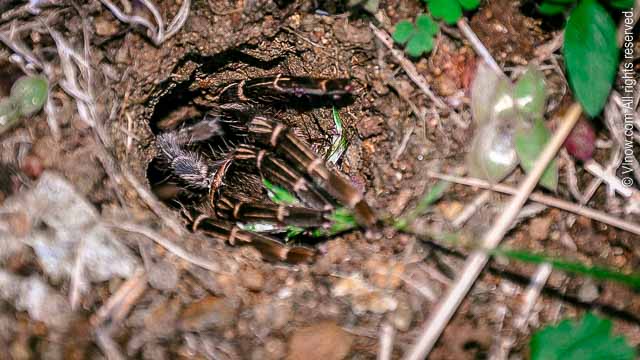
Question: Are there Spiders?
Answer: “We do live on a tropical island, with plenty of forest, and hence lots and lots of arachnid diversity! All spiders are venomous, it’s how they digest their prey, but we have NO spiders that are harmful to humans! And yes, we have several species of tarantula; they can readily be seen out and about at night! Again, harmless!”
If your skin is crawling a bit at the thought of lots and lots of spiders, remember spiders eat tons of mosquito – so go spiders! And just in case you are thinking; “ok, got snakes, got spiders, what about scorpions”. Yes, we have them too. A couple different species in fact; their stings are painful but they are also not harmful.
Dr. Platenberg added, “It’s important to remember that the Virgin Islands are tropical dry forest islands, and they have a diversity of invertebrates, snakes, bats, and frogs that should be expected in this type of habitat and climate. Each species is critically important. With nothing particularly dangerous to humans, it’s far better to let them do their job than to kill them. The use of pesticides can harm birds, frogs, bats, lizards, and other non-target species, and should be avoided.”
For all the reptile enthusiasts reading this post with keen interest, here are the scientific names of the snakes mentioned:
- Puerto Rican Racer (Borikenophis portoricensis)
- Garden Snake (Magliophis exiguum; formerly Arrhyton exiguum)
- Virgin Islands Boa (Chilobothrus granti; formerly Epicrates monensis granti)
- Blind Snake (Typhlops richardii)
- Corn Snake (Pantherophis guttatus)
Interested in exploring the unique flora and fauna of the U.S. Virgin Islands? Discover More

